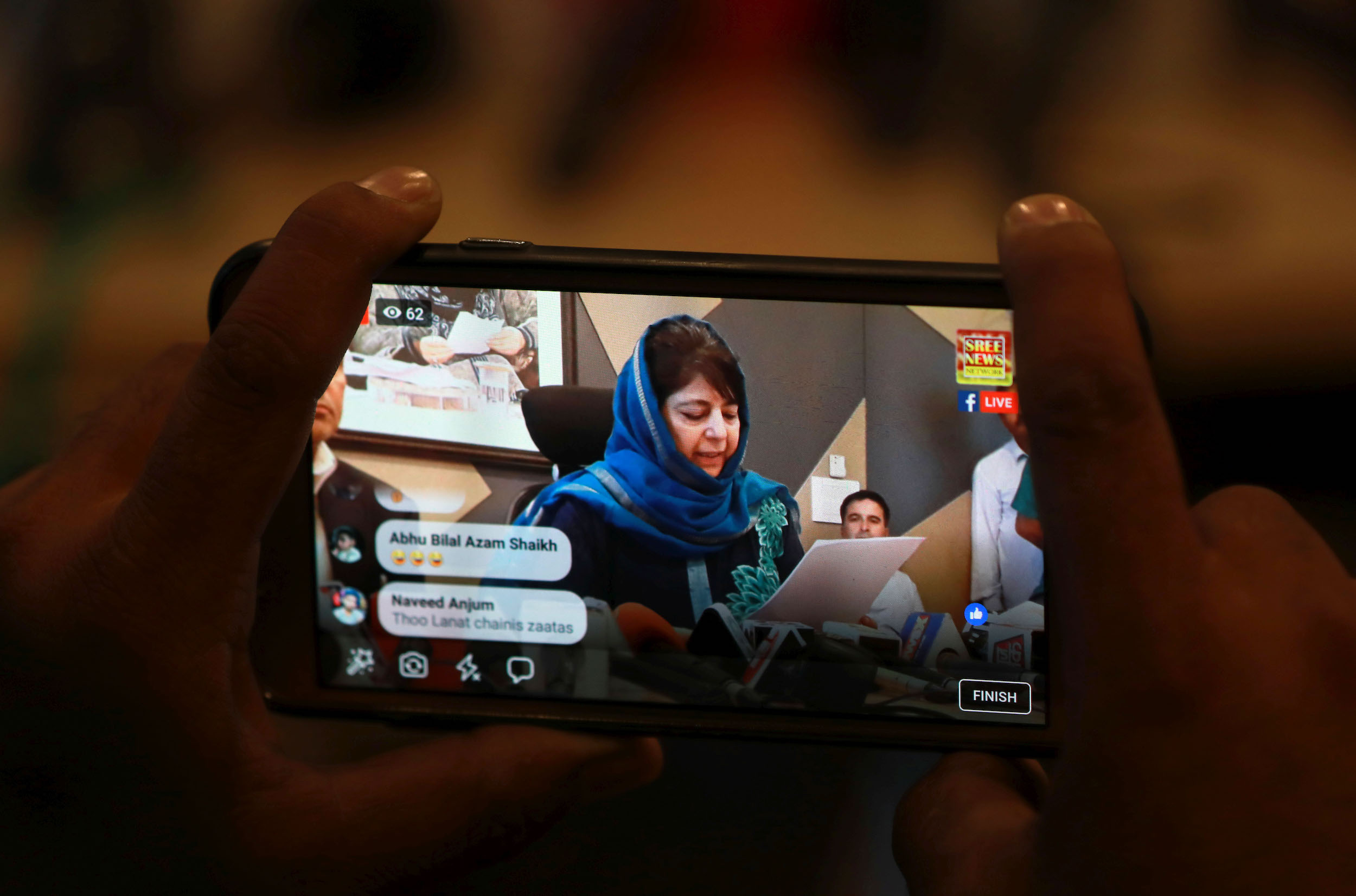Mobile phones have made a career in the media more accessible to independent journalists. But they have also made it easier to exploit them
For Narendra Kumar, 42, mobile journalism was a total ‘Jugaad’ in the beginning.
Jugaad is an informal Indian term which roughly means an approach to successfully solving any problem using simple resources. He says that in 2011 he used a mobile phone for journalism for the first time ever.
“I was covering the agitation of farmers who were demanding compensation for their land and minimum support price(MSP)for their standing crop. They were around 35 miles from New Delhi.
“To control the crowd, the police baton-charged the mob and I recorded that video on my blackberry phone and used the Blackberry messenger to send the video to my editor who was 450 kilometres away. The video was sent in the 3gp video format (designed for 2G and 3G networks) and, to my surprise, the channel used it in the breaking news broadcast. People who came with big TV vans were surprised to see it on the news so fast.”
Kumar says that the main reason for the meteoric rise of mobile journalism by independent journalists in India has been the lower cost it involves.
“A laptop today costs twice or three times the price of a mobile phone and a person can do almost everything on their phone. So journalists in India switched to smartphones instead of buying a costly desktop computer or a laptop.
“This small device, which fits perfectly in your pocket, works as a portable studio; there are hundreds of people who depend totally on mobile phones to do their work, be it recording a story, typing the story, editing the video/photo or releasing the story on their platform,” Kumar adds.
Mobile phone journalism has been a game-changer in India for many independent reporters, as a result. Manoj Kumar, 38, is one such independent journalist who describes a typical day.
On a sweltering Sunday in April this year, for example, he jumped on his motorcycle after receiving a phone call from one of his sources and rushed 13 miles from his home in Banda, Uttar Pradesh, to the scene of a crime.
There, a female district councillor had been found hanging in her home. The daughters of Shweta Singh Gaur claimed their mother had taken her own life after suffering domestic violence from their father and grandfather. By the time Kumar reached the scene, the body was being taken away by the police.
Kumar, an independent reporter based in Banda city, Uttar Pradesh in north India, has contracts with regional news channels and news portals.
As soon as he reached the spot, he began filming everything on his mobile phone and then did a short walk-and-talk piece to camera.

For this particular process of recording the news and gathering the facts, he made use of a small handheld tripod, a long microphone, an earpiece and an extension for the ear piece which converts it into a microphone.
After recording - and, by this time, soaked in sweat - Kumar sat in the shade of a tree and started uploading the videos via WeTransfer which was preinstalled in his android mobile phone and also started typing a brief for the news on the same phone.
The package was sent to the news portal he was working for that day from the spot and was aired about 30 minutes after being sent.
Soon after sending the report, Kumar started making phone calls to the editors of a few other news outlets he was in touch with and apprised them of the situation. He asked everyone if they wanted a news story. He was asked to file a text story by evening for a news portal.
Kumar then returned to his office, a shared 10-foot-by-8-foot office space in the middle of the busy market in Banda city where a few independent reporters come everyday to do their work. All that these reporters are equipped with here are a single desktop computer which they must share between them, a water thermos, four plastic chairs and a high-speed broadband internet connection. It’s a simple way to operate, but it is effective.
Kumar’s table has half a dozen microphones with IDs for different news outlets. All these IDs were made with a plastic pipe on which the symbolic microphone was mounted. The plastic pipe is used by the reporters to avoid physical contact as far as possible with their subjects. This practice came into force after the world was struck by the COVID-19 pandemic. If a freelance reporter is sick - he or she cannot work.
In some ways, therefore, mobile journalism has opened up avenues for independent reporters in India which they could not have found before. But it does not come without cost.
‘Journalism comes with a personal cost’
“Journalism is not easy at all, it comes with a personal cost. You have to run away from home anytime, be it day or night. You have to report a story despite knowing the uncertainties in the payment system but you have to do the job. It is an addiction,” says Kumar.
Kumar says he knew he wanted to be a journalist as a schoolboy. He became passionate about telling stories of pain, water crisis and criminality in the form of journalism.
In 2016 he worked as an assistant to his friend who was a reporter for a regional channel. “I used to see my boss (friend) working on a mobile phone as well as a computer and that is when I decided to work in mobile journalism. It saves time and I thought that if I excelled in mobile journalism then I would be able to beat other reporters in the breaking news game,” he explains.
Even though it is cheaper to work as a mobile journalist in terms of equipment, it is not without cost altogether.
Becoming a mobile journalist was a costly enough process for Kumar. “Buying a new phone was totally out of my reach. I did not even think about going for a new phone and then through a close contact of mine I heard about a second-hand multimedia Motorola phone. My then girlfriend (now wife) helped me with Rs3800 ($48) and I saved Rs3000 ($37) and bought a second hand phone for Rs6800 ($85) and started practising journalism and used the phone for two years.”
“Pursuing journalism is not easy. If journalism is seen as a social service then I will say that mobile journalism is a very costly social service because you need a good multimedia phone to do it and in this thankless job, affording a good mobile phone is also a hard task,” he says.
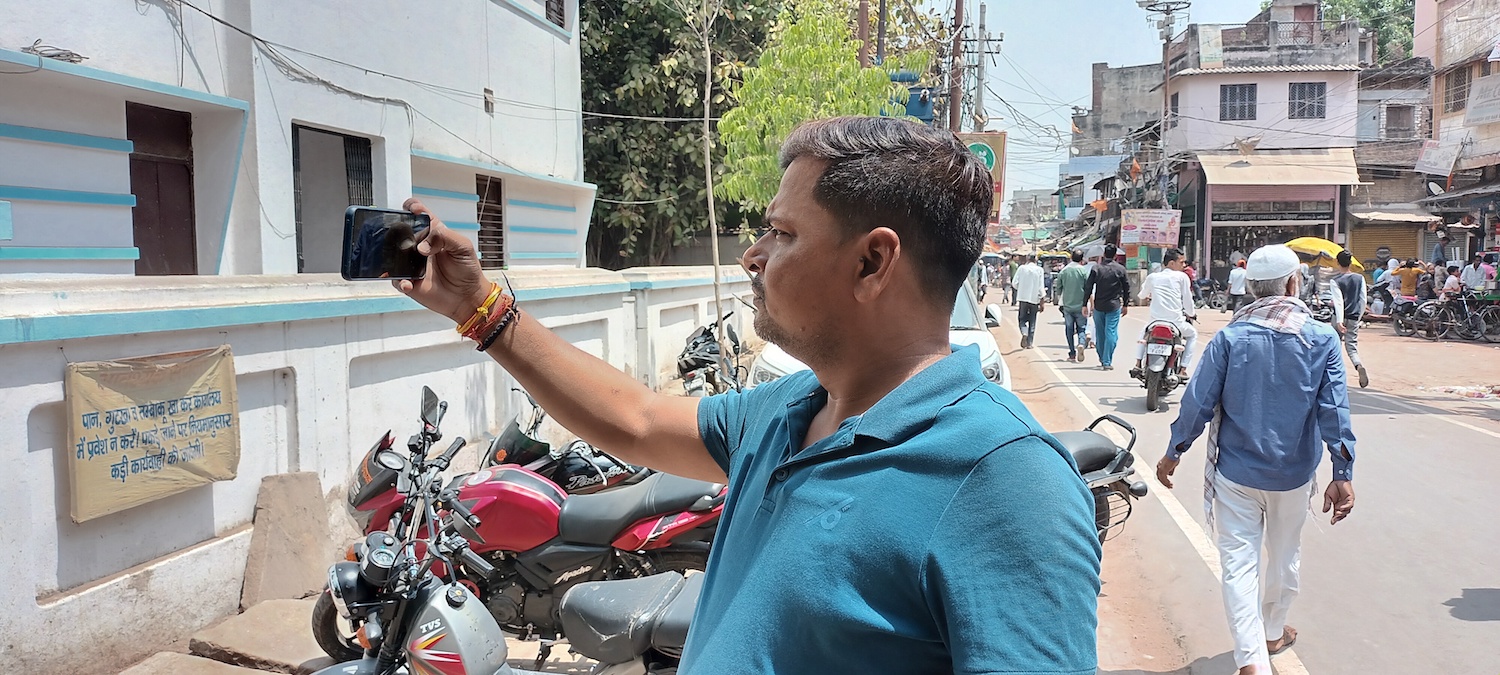
Generate revenue and ‘take a share’
Much of the time, stringers like Kumar are not paid as well by the news outlets and are sometimes even asked to generate revenue for the production house they work for if they expect to receive payment at all.
The revenue is generated in the form of advertisements that these stringers must sell to local traders, politicians and even government officials. The news outlets give these stringers a percentage of the money as a share. This is instead of paying them a normal salary.
Bhim Manohar, a stringer who has worked with several national and regional electronic media outlets, says that he has faced this situation many times.
“Working as a stringer is no less than a fight for survival in India because here people do not respect your work and no one wants to pay. Instead they want us to ‘earn’.
“Every time a new news channel or a web-portal comes to me to work for them, I make it clear first that I will not be working for free and will not be bringing any advertising to them. This is why I earn less and run a boutique shop as the main source of income for my family,” Manohar says.
He adds: “National news channels do not pay much and the work pressure is very high at every channel. The assignment desk comes down heavily on us. It reprimands us and often warns that we might lose our jobs if a breaking news event is missed.”
Treated like ‘fixers’
Not just this, stringers working in northern India say they have also been asked to make the arrangements if a reporter flies in from the national capital of New Delhi - essentially acting as a “fixer”.
A reporter who is based out of Ayodhya, the epicentre of Hindutva politics in India, told Al Jazeera Journalism Review on the condition of anonymity that he was asked to book a hotel and arrange alcohol for a “bigshot” television journalist who had come to the temple town of Ayodhya to cover the foundation laying ceremony of the Lord Rama temple which is being constructed at the site where once stood the Babri Mosque.
The local reporter says that he had to do all this because he was working for the channel as a newly appointed stringer and he would have lost his job had he refused.
“A lot of people call us corrupt, 'liaisoner' and much more [because they are forced to sell advertising and are therefore viewed as “corrupt”], but the fact is that we have families and they have needs. We work for respect and two square meals and for that we have to compromise at times,” he says.
Furthermore, the journalist explains that he had to buy his own mobile journalism kit when he became associated with the national news channel he is now working with. He was not given any formal mobile journalism training and was simply asked to make videos, collect multimedia and do a piece-to-camera like other reporters do and send it to the assignment desk.
“I ordered the mobile journalism kit online. The kit included a selfie stick, a lapel mic, and a tripod. All this cost me around $35.”
For the reporter, this represents a large chunk of his $400 monthly earnings, from which he must pay household costs, fuel, children’s school fees and other expenses.
“I knew how to click photographs and make videos. I practised it for a few days. Now I am a ‘pro’,” he says. “I only faced problems when doing live filming because I had never done it in the past. Doing lives requires a good internet connection and that is not possible on a cellular domain. Doing it on Wifi or a stronger connection makes it easier. When you are live and the video starts buffering due to poor internet connection then it is embarrassing for you as a reporter,” he adds.
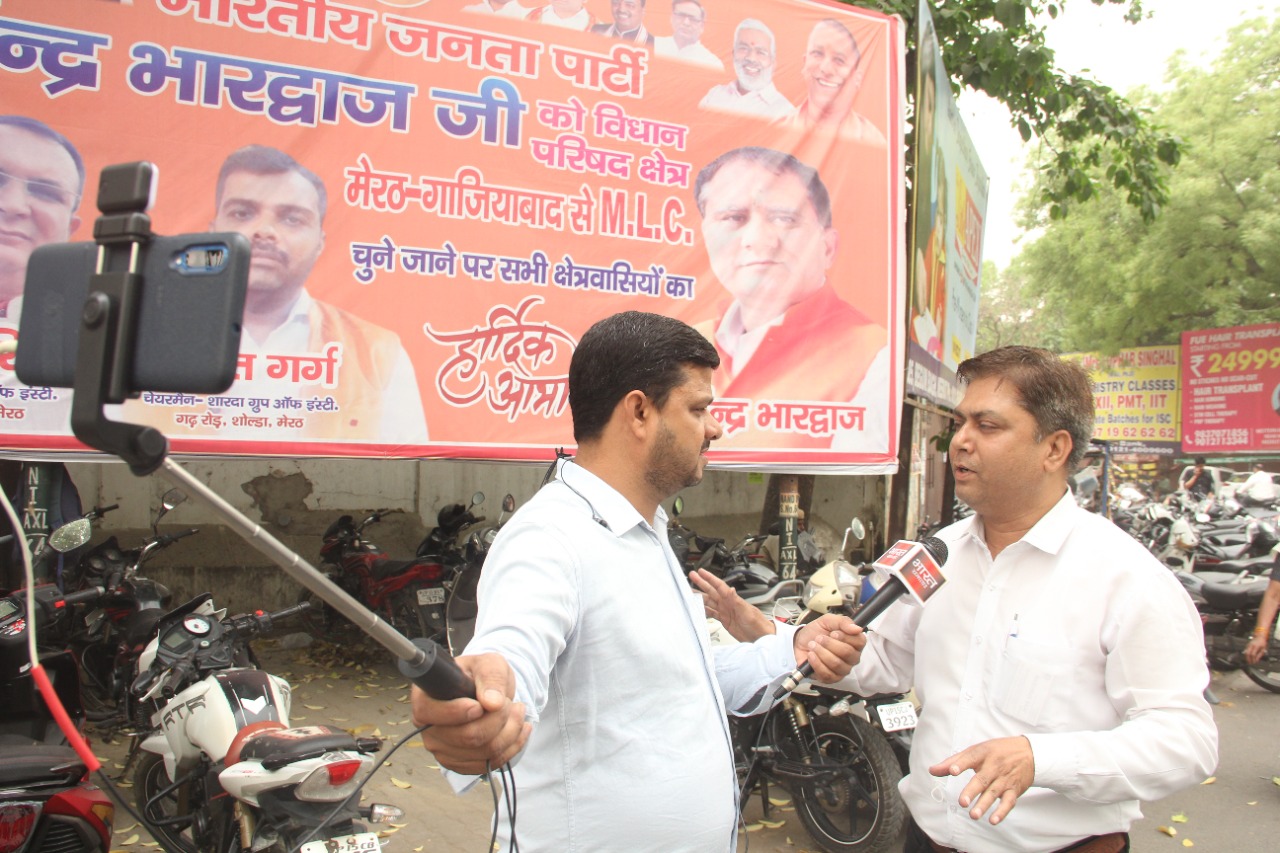
‘Government officials don’t recognise us as journalists’
Rakesh Kumar Giri, a stringer for several online news outlets based in Basti, one of the most deprived districts in India, says that government officials do not acknowledge you as a reporter if you are not associated with either the electronic media or with a reputed newspaper.
“People like me who provide first-hand news to news outlets are no less than the spine of the organisation but even an acknowledgement letter provided by the news outlet does not mean anything for the government officials because they do not consider online news platforms as a credible agency,” he says.
This means government officials often decline to make any comment to mobile journalists or to provide them with official statements.
The news reporter says: “When the lockdown was in force during the pandemic a lot of writers who worked for online news platforms were charged by the police for violating the lockdown orders because the district administration did not consider people like us to be [bona fide] reporters.”
The reporters met senior administrative officials to ask for a FIR (First Information Report) filed against them to be quashed on the basis that they were reporters working to bring important stories during the pandemic. The administrative officials did not listen to them, saying that they did not believe they were news reporters.
A lack of formal training
Giri further says that the transition from regular newsroom to a newsroom where journalists are being trained to become mobile journalists is tough as it requires money, time and resources which reporters must often fund themselves.
“The basic resource to do mobile journalism is a mobile phone, so buying a decent phone with a good camera, a microphone, a tripod and other accessories including a light and a power bank was a costly affair. To gather the money for these things is a Herculean task because we reporters are paid very little.”
The time it takes to train as a mobile journalist also costs working reporters money, he adds.
“We invested a lot of time in learning the skills which included shooting, recording, sending files, getting the recorded files to an external device for future reference and things like that. In that time we, reporters, missed many important news events and lost revenue,” Giri says.
Reporters have also had to teach themselves to publish stories on Facebook and other social media platforms, he adds. “It was like making a curry by many chefs with no end result.”
‘Parachute journalists eat our credit’
Kumar adds that major news organisations take advantage of their new-found skills without giving due credit.
He shares that reporters who come from the national capital of New Delhi or the Indian financial capital of Mumbai do not acknowledge the hard work and efforts which are put into a story by the reporters on the ground.
“They come to ‘tier II’ cities where people like me work. They ask us for stories on burning topics in smaller cities or the nearby areas. They take all our help in doing stories, they even ask us to handle the camera or get the appointment of people related to the story and they do not give credit to the reporter at all. They go back, produce the story and win awards,” Narendra Kumar said.
He recently tweeted that a lot of hard work of reporters on the ground is being ignored completely when awards are being won by mainstream journalists based in big cities of India.
Kumar says that he is fortunate enough that he has been receiving a respected remuneration for the efforts he puts into stories printed in national media but adds that there are thousands of other journalists in India who do not get the credit or the remuneration.
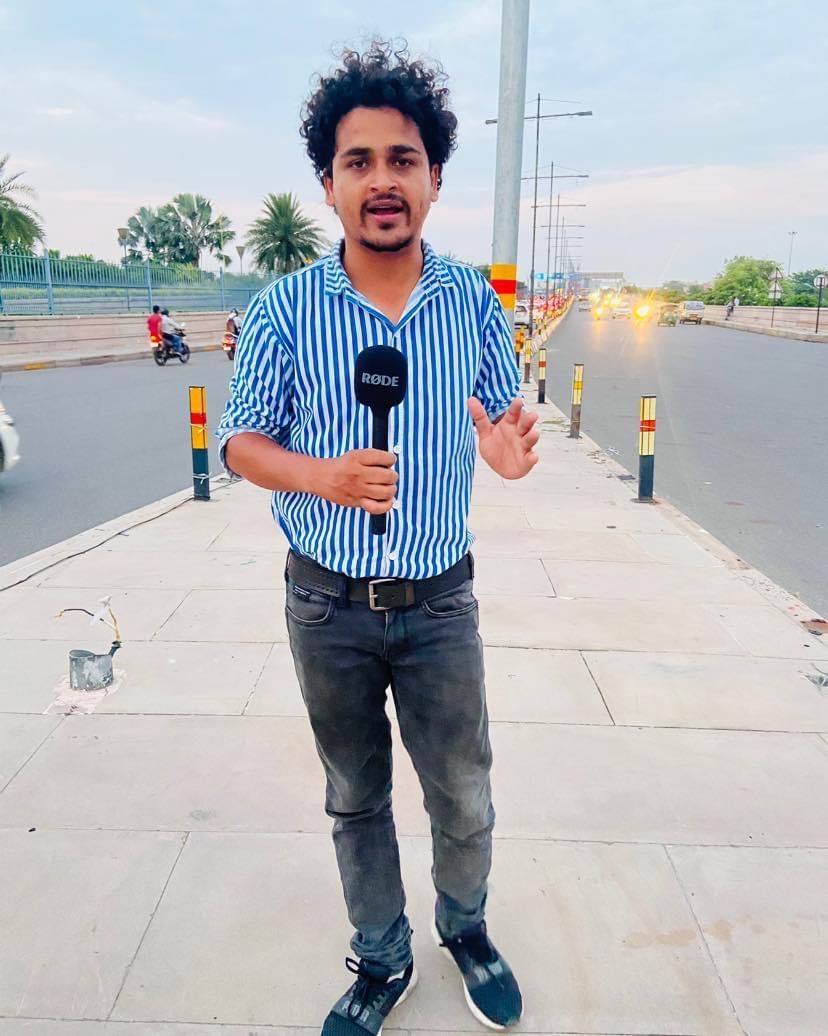
“It is very sad to see that A few people sitting in New Delhi are taking all the credit for the success of mobile journalism. They do not add the name of the person who has helped them do the story or who handled their mobile phone camera while they were on the ground or who gave them the lead for that specific story.
“Mobile journalism in India came into practice when newsrooms started laying off the cameramen in order to cut costs and save revenue but people in India have been doing journalism through mobile phones much before this.”
It is important to note that Indian newsrooms started making much heavier use of mobile phone journalists post 2017 when NDTV (New Delhi Television Limited) laid off nearly 70 technical staff in July of that year.
The channel in the statement then said, “... We are the first major network in India whose reporters are all trained in using mobile phones to shoot stories. This is not just about cost-cutting, though that is certainly, for us - like any other responsible business - an important factor in operations. Mobile journalism means reports are lightning-quick and much more efficiently produced - a priority for any news company.”
No press card means exploitation
Shailesh Srivastava, the editor of Indiaspend Hindi, a data journalism and investigative news organisation, says: “When it comes to stories or reports from remote areas in India they are mostly done by stringers entirely or in some cases most of the leg work is executed by them.”
Now, talking about their issues, in India the problems stringers or grassroots freelance journalists face are enormous. Stringers usually aren’t issued with press cards which would formally identify them as professional journalists and that restricts them from accessing government departments and politicians. This means that journalists at major news outlets can take the stories of those reporters, approach government and other officials for comment themselves, and then claim the story for themselves.
“The exploitation of these freelance journalists mostly happens at the hands of the publications they work with. The payments are meagre and mostly delayed. Their stories are treated as just inputs and the editors or senior correspondents make them their own stories,” Srivastava says. “During big events like elections or some tragedies, correspondents from big Indian and global organisations travel to ground zero for stories. To cover these stories they take help of local freelance reporters or stringers and in this setup they are called ‘fixers’.
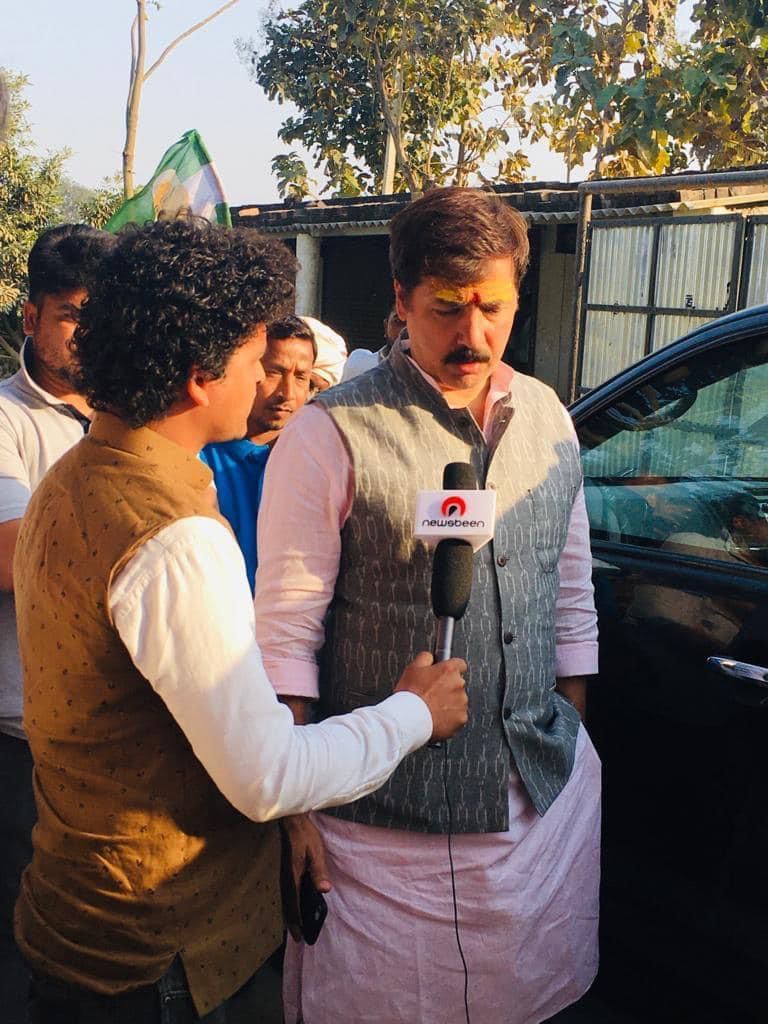
“In these fixing assignments also, they are never given the credit for the story. On top of that, they are even robbed of their dignity as they are treated like a porter or a labourer at their disposal. There are some organisations, at the moment, that are getting rid of these practices but the road to recovery looks pretty long as of now,” he adds.
Aishwarya Tripathi, a journalist based in Bangalore, recalls trying to identify herself as a journalist without a press card "Having a press card makes a lot of difference,” she says. “I remember I was an intern for a reputed newspaper in Delhi when I had started out in journalism and had gone to cover a citizens' protest against the unrest in the city, just after 2020 Delhi riots, and two cops approached me and asked to sit in the police bus.
“I repeatedly told them that I was a journalist but they paid no heed and stuck me in a bus full of students who had come to protest. They finally dropped us on the outskirts at Rajiv Gandhi Sports Stadium in Bawana village and kept us confined [in the stadium] for more than four to five hours till dusk," she recalls.
Exploitation in the name of ‘learning’
Anurag Singh, a young journalist, has already faced exploitation in the name of “learning”.
From unpaid internship to unpaid work and even work based on targets (only getting paid if you bring in advertising), Singh says he has come away with a “sour taste” from his early days as a journalist.
He adds that he believes mobile journalism can only be pursued when one has enough experience on the phone to shoot, edit and produce a complete story package, something requiring training which not everyone can afford.
“When a reporter goes into the field, he has to take notes, obtain footage and build a package. In this process, the reporter many times forgets or misses important points which are needed for the story,” he says. “I am a newbie to the profession and for people like me who want to learn everything the newsrooms should embed us with the seasoned people in the field.”
Singh says that during the state assembly elections of Uttar Pradesh in 2022, a news portal appointed him on a salary of Rs25,000 ($312) per month but as soon the elections in the state concluded he was asked to bring in revenue in form of advertisement amounting to Rs50,000 per month - ie, twice the amount he was receiving as salary. If he failed to bring in that amount of advertising, he would not be paid at all.
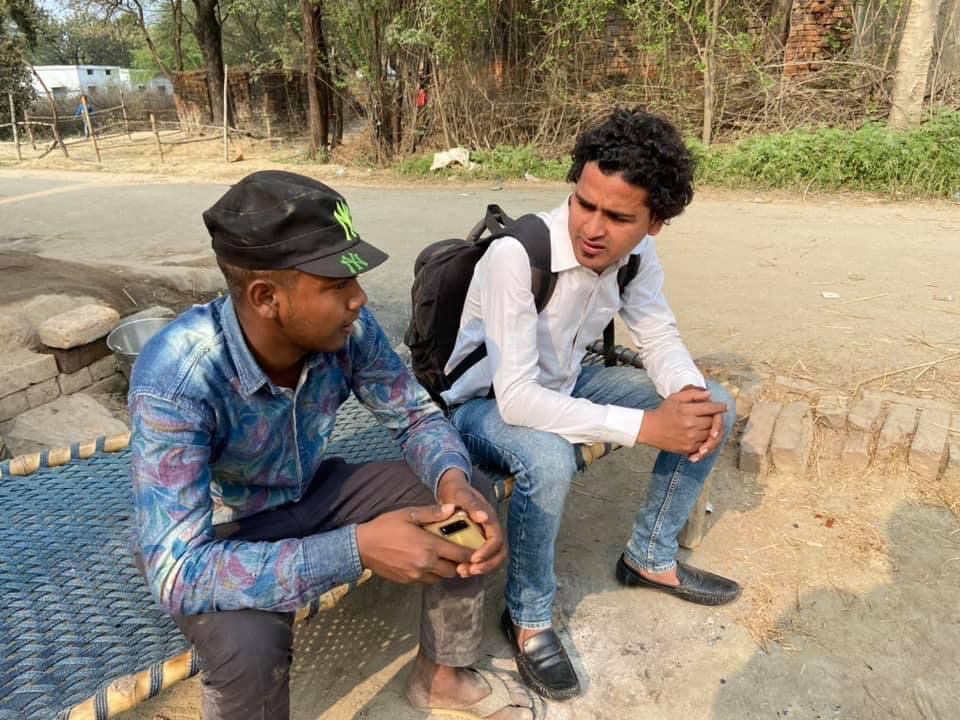
Singh further says that, other than this, the biggest problem lies in getting proper acknowledgement as a mobile journalist.
“When you go into the field, you will find a sea of people with mobile phones and mics trying to document the event and then it raises the problem of getting any proper acknowledgement because the subject really fails to differentiate between a mobile journalist and a vlogger.
“This happens at most breaking news events. The government officials in smaller towns have made it a rule that they will not talk to reporters who do not have press cards or are associated with online news outlets which are not considered as mainstream by the government departments,” Singh adds.
Viewing journalism as a profit-making enterprise
Brajesh Mishra, the Editor-in-chief of Bharat Samachar, a regional news channel operating from Uttar Pradesh, says that his news operations are totally based on mobile phones.
He believes that the introduction of Whatsapp brought the biggest revolution in the news industry when video sharing became popular.
He says: “The Whatsapp video service changed the game of breaking news and, for this, the newsrooms did not give any training to reporters because everyone knows how to shoot and send the video. But this does not work for a bigger news package so channels started using mobile applications like Webstreamer. But, still, a lot of newsrooms did not provide their reporters on the ground with proper training which resulted in bad video news packages.
In Lucknow, his news organisation does offer training to journalists. However, he adds: ”The problem lies when people start seeing journalism as a money minting industry.
“If you run an organisation ethically, then you will never be able to mint money. The maximum you can go is ‘at par’ (no profit, no loss) so the large number of news outlets which have come into the field have no revenue bringing plan other than asking their reporters to bring advertisements and take commission from the money they bring.”
Brajesh says that field reporters should be paid a respectful amount as remuneration because these are the people who invest their time, money and energy in gathering first hand news from the field.
“It is very unfortunate that stringers are not paid properly in India for their hard work,” he says. “These are the reporters who innovate techniques while doing mobile journalism. There are many of them who started doing mobile journalism when newsrooms actually had no idea about it and they never got due credit for it.”
Singh was paid for four months for reporting and then he had to quit, he says.
He is just one example of how people working in more remote parts of the country are exploited by the news outlets in India.
Singh has now started doing freelance reporting and content writing work. “I think I am done getting exploited by people who do not pay and instead ask the reporters to bring business. It is better to earn less but stick to primary reporting, do content writing and stay morally correct,” he concludes.
